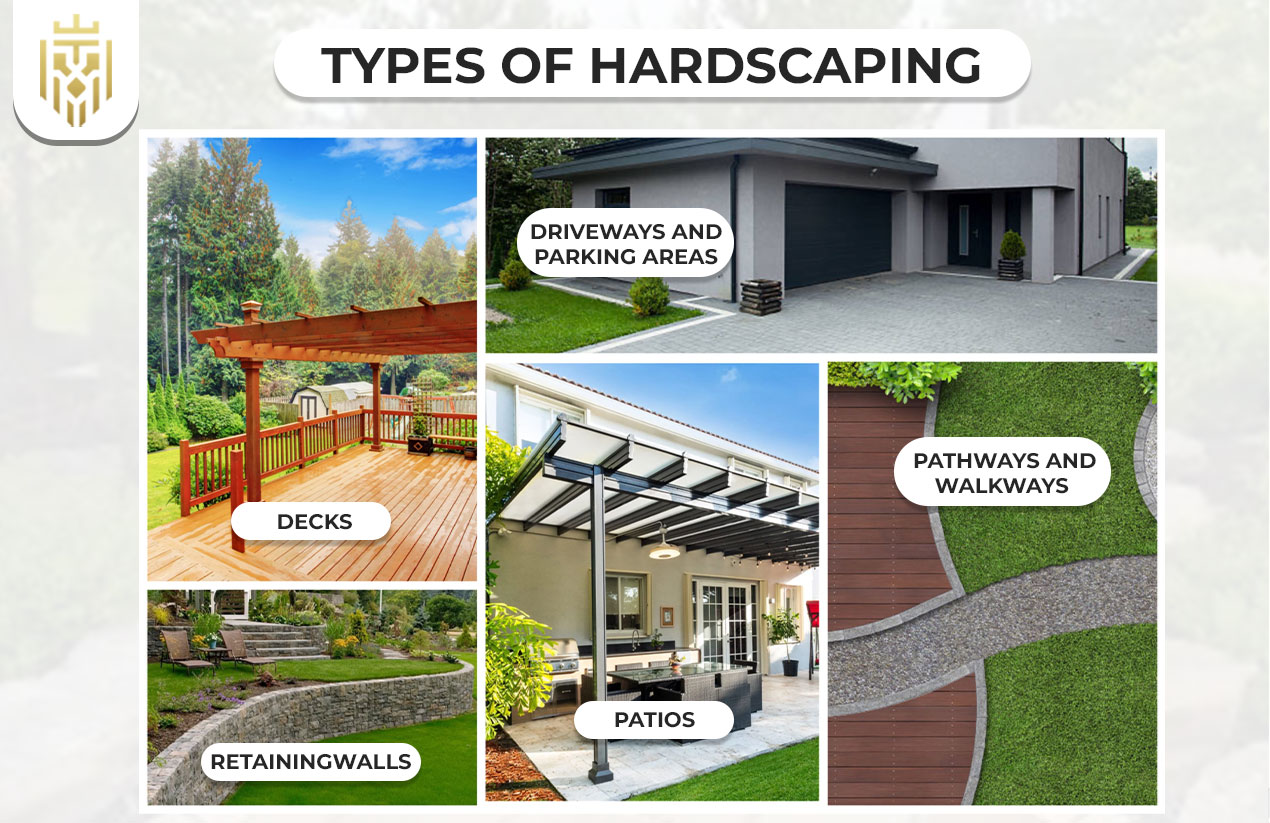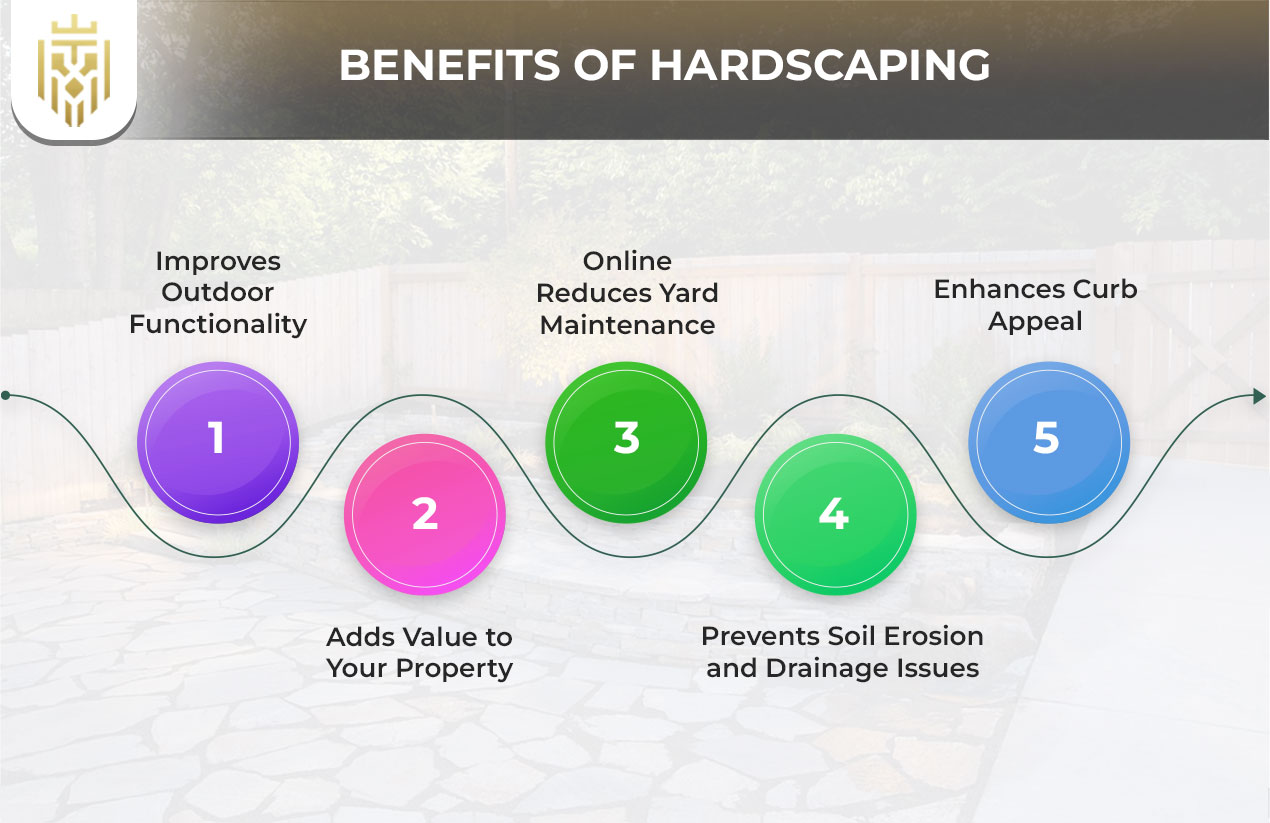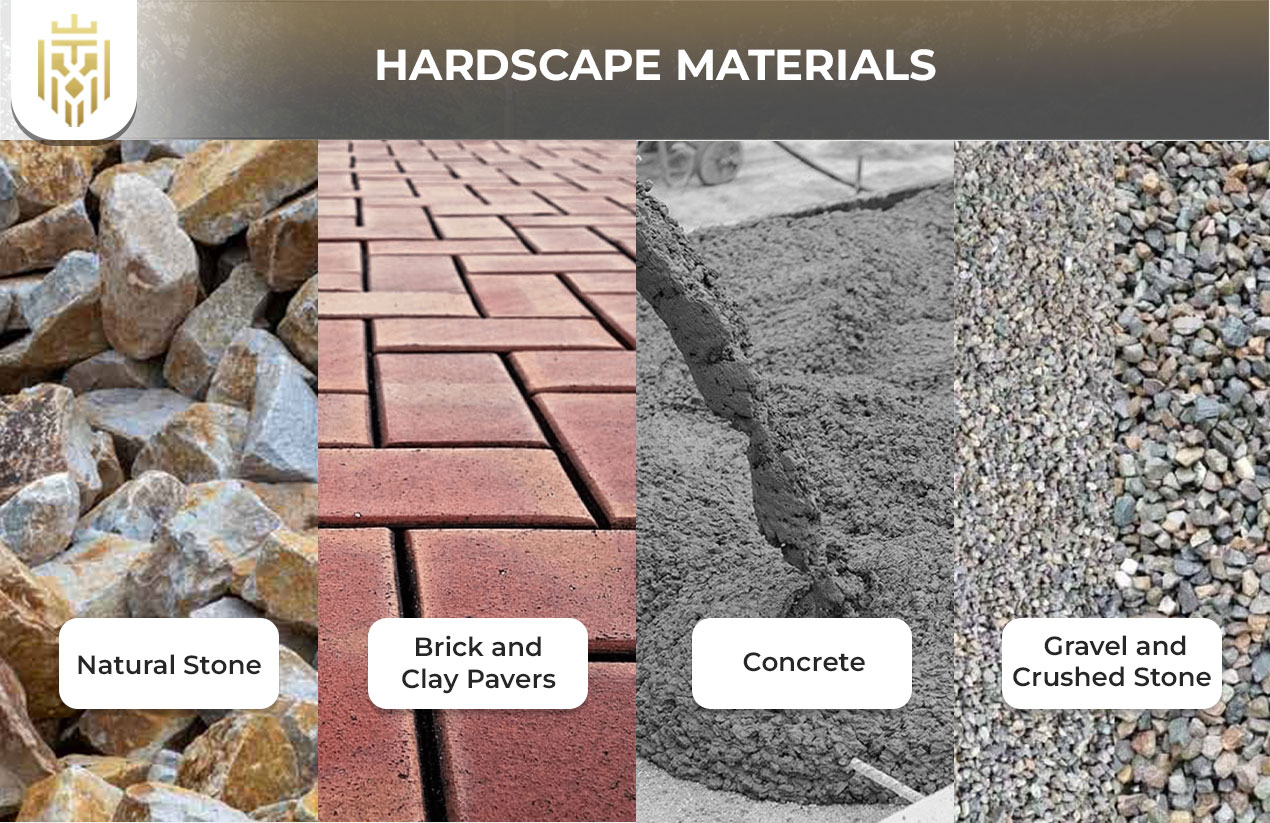What is Hardscaping?
Hardscape is an aspect of landscape design that uses elements like natural stone, brick, tile and concrete. These materials are essential for creating the desired functionality and aesthetic in any outdoor area. Understanding what is hardscaping and its usability helps property owners enhance property value with the important background framing patios, driveways, walls and various exterior features.
Differences Between Hardscaping and Landscaping
Hardscaping and landscaping differ mainly because of their unique elements. Hardscape refers to features made from materials things like patios, paths and walls. Instead, landscaping uses plants and trees along with brick or stone in outside areas to create a lively, balanced atmosphere.
Types of Hardscaping

Types of hardscaping are patios, decks, pathways and walkways, retaining walls and driveways and parking areas. Non living elements enhance outdoor design by using hardscape items such as pavers, rocks and bricks to improve safety, add beauty and require less care.
Patios
Having a patio outside proves that hardscape materials like stone and pavers can be used to create a comfortable outdoor area. It makes your outdoor living space both useful and attractive by adding a sturdy and appealing spot that goes well with your landscape and requires little maintenance.
Decks
A deck refers to a elevated surface made with hardscape materials such as wood or stone. Because they are non living, terrace designs can join the feel of comfort with the look of structure in a room outside. When you have a deck, your yard design now includes a comfortable spot for events, food and daily rest.
Pathways and Walkways
Pathways are key non living features in landscape design that direct people as they move from one area to another outdoors. If you build paths with gravel, concrete or stone, they give your garden a smart look and allow access to all areas, fitting for every type of style and setting.
Retaining Walls
Stone and concrete are some of the several materials used to construct a retaining wall, which helps to secure and strengthen the ground. Such elements in a garden shield against water erosion, offer even planting sites and bring in vertical features. Planning any landscape structure must begin with properly placing pavement.
Driveways and Parking Areas
Hardscape products such as asphalt and concrete go into the durable construction of driveways and parking areas. They allow you to make wise use of space and boost the outside look of your home. By offering both usefulness and a pleasing symmetrical look, a smartly designed driveway improves your landscape.
Benefits of Hardscaping

Making hardscaping changes in your outside areas makes them need less upkeep, protects from erosion and makes your home more valuable. Organizing some durable non living elements into your artwork gives it structure that you may rely on, along with replacement or additional support to true living elements.
Improves Outdoor Functionality
Adding non living elements such as patios and walls through hardscaping can enhance your outdoor space. Such features control the erosion process, organize the landscape and make the design more attractive. Hardscape is meant to improve and simplify the upkeep of outdoor spaces in places where it may be difficult.
Adds Value to Your Property
Making hardscape improvements to your property with elements like decks and patios, can lead to greater returns. Better outdoor space helps attract attention and makes a home more comfortable to be in, giving homeowners a great return on their outdoor investments.
Reduces Yard Maintenance
Since it uses only inanimate features, hardscaping drastically cuts down on things you have to do in the yard. Unlike plants and grass, patios, pavers and decks don’t need to be watered or trimmed. Smartly placing hardscape elements turns your outdoor area into a practical and attractive space that doesn’t take much to maintain.
Prevents Soil Erosion and Drainage Issues
Hardscaping covers features designed for use such as retaining walls and paths which facilitate better handling of excess rainwater. The lack of life in such materials directs water without causing damage to the earth’s surface. Hardscape materials strategically added to your landscape protect it and help keep the area looking good.
Enhances Curb Appeal
Choosing walkways and patios from hardscape materials can quickly enhance your home’s exterior. Things like stone and grass provide structure, difference and beauty to your outdoor area, allowing your home to be recognized through creative landscape design.
Hardscape Materials

Some of the standard hardscape materials include natural stone, concrete, brick, gravel and pavers. They give landscape design its structure by setting up paths, patios and walls while serving both to strengthen and beautify the area.
Natural Stone
Natural stone is famous for being adaptable, appealing both today and for years to come. Granite, slate, limestone and quartzite can bring both unusual textures and colors to any outdoor space when used in landscape design, despite being so hard.
Brick and Clay Pavers
Brick and clay pavers are eye-catching materials that lend an attractive and organized touch outdoors. When used in patios or walkways, pavers are durable objects that beautify landscapes in an unchanging way, with only occasional care and numerous design options.
Concrete
Many patios, driveways and walkways are made using the hardscape material concrete. Being non living, it stands strong and is flexible in designing outdoor spaces. Because concrete can blend with almost any set-up, it saves money and is artistic.
Gravel and Crushed Stone
Gravel and crushed stone serve well to identify and mark paths, driveways and drainage zones. With these materials, you can improve the look of your garden, enjoy their affordability, textures and flexibility, all while avoiding the regular care needed for living plants.
FAQs
1) What is Hardscaping?
Hardscape is an aspect of landscape design that uses elements like natural stone, brick, tile and concrete. These materials are essential for creating the desired functionality and aesthetic in any outdoor area.
2) What is the Difference Between Hardscaping and Landscaping?
Hardscaping and landscaping differ mainly because of their unique elements. Hardscape refers to features made from materials things like patios, paths and walls. Instead, landscaping uses plants and trees along with brick or stone in outside areas to create a lively, balanced atmosphere.
3) What are the benefits of hardscaping?
Making hardscaping changes in your outside areas makes them need less upkeep, protects from erosion and makes your home more valuable. Organizing some durable non living elements into your artwork gives it structure that you may rely on, along with replacement or additional support to true living elements.
4) What are the common materials used in hardscape design?
Some of the standard hardscape materials include natural stone, concrete, brick, gravel and pavers. They give landscape design its structure by setting up paths, patios and walls while serving both to strengthen and beautify the area.







